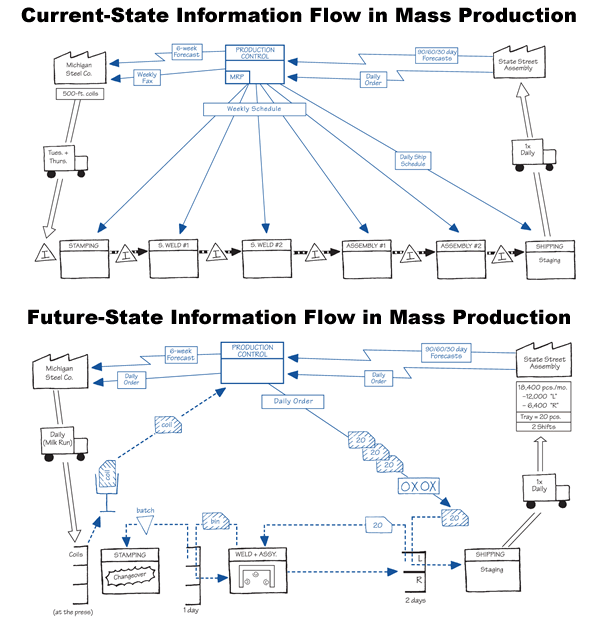Information Flow
The movement of information on customer desires backward from the customer to the points where the information is needed to direct each operation (see illustrations below).
In companies based on mass production principles, the flow of information usually takes parallel forms: Forecasts flowing back from company to company and facility to facility; schedules flowing back from company to company and facility to facility; daily (or weekly or hourly) shipping orders telling each facility what to ship on the next shipment; and expedited information countermanding forecasts, schedules, and shipping orders to adjust the production system to changing conditions.
Companies applying lean thinking try to simplify information flows by establishing a single scheduling point for production and instituting pull loops of information. These go upstream to the previous production point and from that point to the previous point—all the way to the earliest production point.
The illustrations below show the multiple paths for information flows in mass production compared with the simpler flows in lean production. Note that lean producers still provide forecasts, because firms and facilities further from the customer need advance notice to plan capacity, schedule their workforce, calculate takt time, adjust for seasonal variations, introduce new models, and so forth. However, the day-to-day flow of production information can be compressed from schedules, shipping releases, and expediting to simple pull loops.
